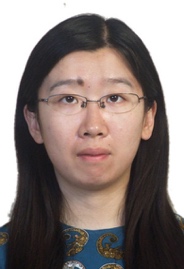Bing Bai1, Quan Zheng1, Shuai Ren2, Changyi Zhang1, Wen Yang1*, Changjun Hu2
1. China Institute of Atomic Energy,2. University of Science and Technology Beijing
Abstract: Oxygen Dispersion Strengthened alloy (ODS alloy) has become the candidate structural material for the fourth generation advanced nuclear energy system and the first wall material for fusion reactor because of its excellent mechanical performance at high temperature and radiation swelling resistance. However, the material need to be further optimized for application. At present, the proposal of Materials Genome Initiative reflects the demand for accelerating the process from discovery to application of materials. Based on the big data, machine learning is used to predict candidate material, which combined with data mining. It is an important way for rapid development of materials. The performance of material is usually the results of multiple physical mechanisms, rarely affected by a single factor. Machine learning can help to understand the effect of multi-parameter coupling and increase the dimension for understanding problems. Therefore, machine learning is helpful for discovering the correlation between various parameters and properties of materials. In this work, the relationship between the key components such as Cr, Y2O3, W and Ti in ODS alloy and tensile property is established with the help of machine learning. Several components of ODS alloy with higher strength are predicted, which will help to promote the optimization of ODS alloy.
Keywords: ODS alloy; Tensile property; Machine learning; Material optimization design

Figure 1 Test Value-Experimental Value scatter chart
图1 预测值-实验值分布散点图



(a) Cr-tensile strength (b) W-tensile strength (c) Y2O3-tensile strength
Figure 2 Relation between different components and tensile strength
(a) Cr含量与抗拉强度 (b) W含量与抗拉强度 (c) Y2O3含量与抗拉强度
图2 不同成分与抗拉强度的关系
基于机器学习的高强度ODS合金成分设计
白冰1,郑全1,任帅2,张长义1,杨文1*,胡长军2
1. 中国原子能科学研究院,2. 北京科技大学
摘要:氧化物弥散强化合金(简称ODS合金)因其具有优异的高温性能和抗辐照肿胀性能,已成为第四代先进核能系统结构材料和聚变堆第一壁材料的首选,但实现应用材料仍需进一步优化。当前,材料基因工程的提出反映了全球对加速材料从发现到应用进程的需求,其中基于大量数据,采用机器学习找出特征性参量,进行数据挖掘,预测出候选材料即是材料快速发展的一个重要途径。材料性能通常是多个物理机制耦合的结果,很少只受单一因素影响,利用机器学习方法可以同时研究多参量耦合的效果,增加理解问题的维度,机器学习方法的引入对于理解与发现各种材料参数与性能间的关联极有帮助。因此,本工作针对ODS合金,借助于机器学习的方法,建立了ODS合金中Cr、Y2O3、W、Ti等关键组分与拉伸性能的关联性,并预测出了几种具有高强度的ODS合金成分,这将有助于推进ODS合金的材料优化,为快堆结构材料用ODS合金优化设计提供技术支持。
关键词:ODS合金;拉伸性能;机器学习;材料优化设计.

清华大学材料科学与工程专业,日本东京工业大学材料化学专业双硕士学位。目前就职于中国原子能科学研究院,助理研究员,其间于2017年作为国家公派访问学者赴瑞士PSI交流一年。工作以来主要从事反应堆结构材料辐照效应、人工智能技术在堆结构材料优化中的应用,以及核电厂内关键结构部件失效分析等研究工作,目前负责并参与国家重点研发计划项目、中核集团优先发展项目、国家自然基金项目以及核电技术服务项目等多项科研工作,期间获得中核集团科学技术奖二等奖1项,三等奖1项,在国内外期刊上发表学术论文十余篇。